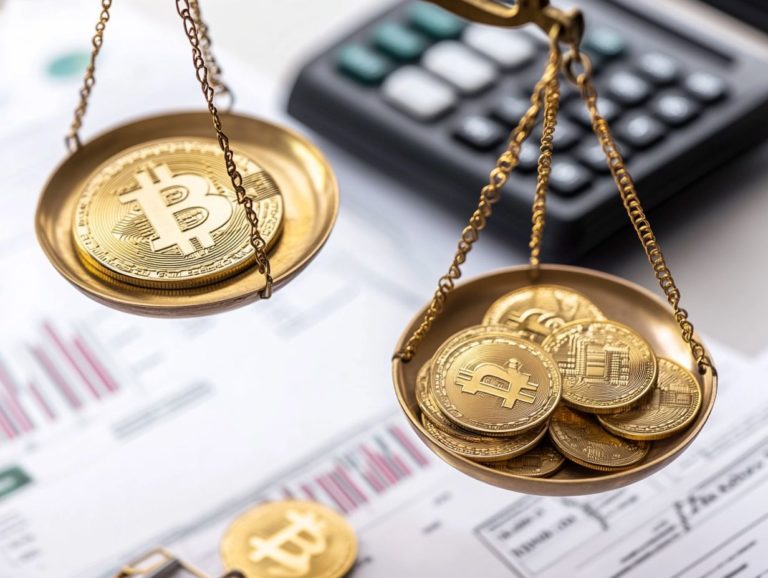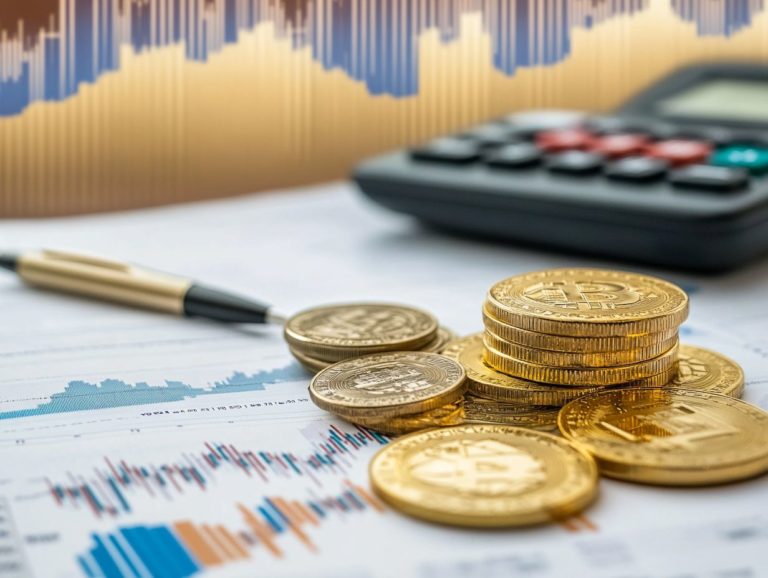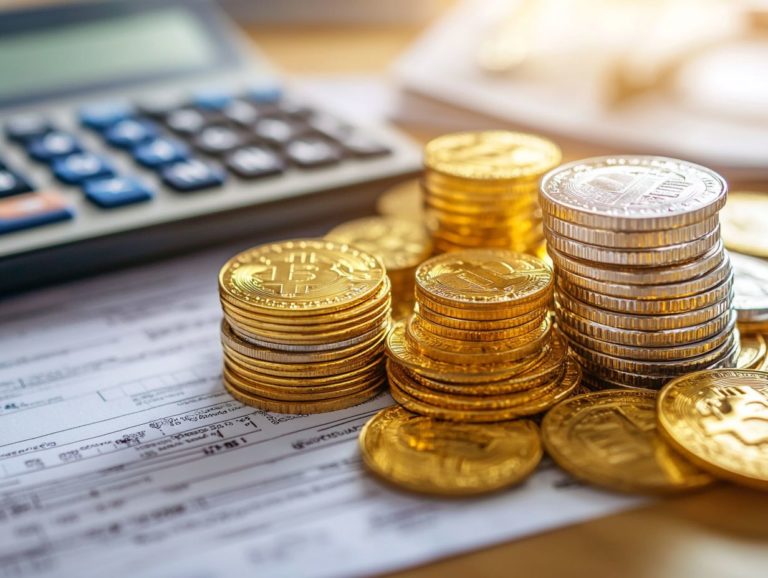How Tax Laws Affect Platinum and Palladium Investments
Investing in precious metals like platinum and palladium can be a rewarding endeavor. However, it s crucial to grasp the tax implications associated with these investments.
This article delves into what platinum and palladium are, the compelling reasons to consider investing in them, and the intricacies of capital gains tax (the tax on profits made from selling an asset).
You ll also discover strategies to minimize your tax burden, explore tax-advantaged accounts for your investments, and consider potential changes to tax laws that could impact your profits.
By the end, you ll learn how to navigate the tax landscape successfully in precious metal investments.
Contents
- Key Takeaways:
- Overview of Platinum and Palladium Investments
- Tax Laws and Investments
- Ways to Minimize Tax Impact on Investments
- Potential Changes to Tax Laws and Their Impact
- Frequently Asked Questions
- How do tax laws affect platinum and palladium investments?
- What are the current tax laws related to platinum and palladium investments?
- Do platinum and palladium investments have any tax advantages?
- Can tax laws change and affect my platinum and palladium investments?
- How can I minimize the tax implications of my platinum and palladium investments?
- Are there any specific tax reporting requirements for platinum and palladium investments?
Key Takeaways:
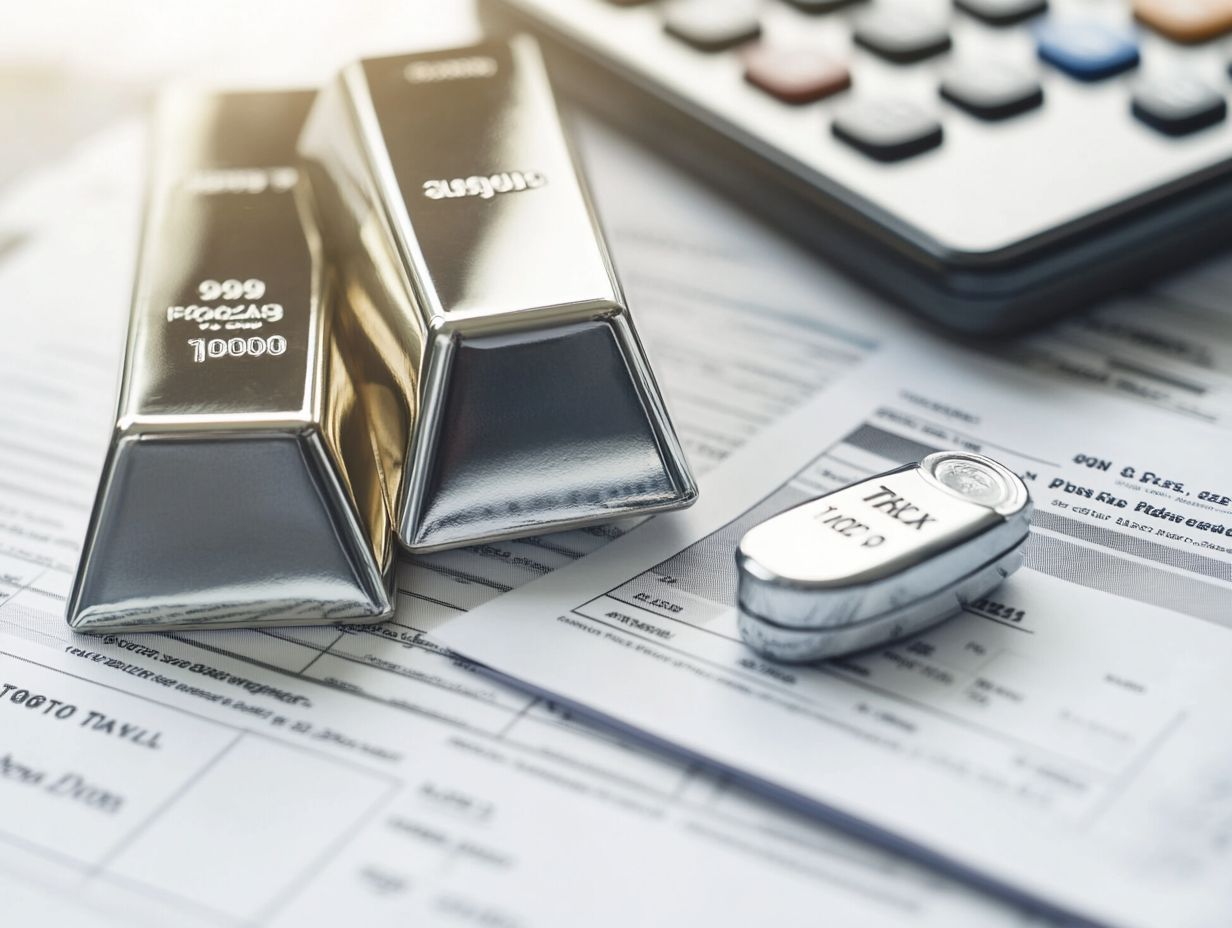
- Platinum and palladium are valuable precious metals that can be attractive investment options due to their scarcity and industrial uses.
- Investing in platinum and palladium can have tax implications, including capital gains tax on profits.
- To minimize the tax impact of investments in these metals, consider strategies such as tax-advantaged accounts and staying informed about potential changes to tax laws.
Overview of Platinum and Palladium Investments
Investing in platinum and palladium has become an appealing strategy within the precious metals arena. This is particularly relevant for those seeking to diversify their investment portfolios.
Market conditions are often swayed by global economic trends. These metals not only act as a hedge against inflation but also serve as robust assets for wealth preservation.
Their distinctive properties and limited supply further amplify their allure. They position themselves as attractive options for investors focused on achieving long-term financial security and stability.
What are Platinum and Palladium?
Platinum and palladium are precious metals sought after for their rarity and diverse industrial uses. This makes them noteworthy investment opportunities.
These metals showcase unique physical properties: platinum is dense, malleable, and remarkably resistant to corrosion, whereas palladium is lighter yet equally robust, featuring a high melting point.
Historically, both have played critical roles in various industries, especially in catalytic converters for the automotive sector. This factor drives demand and influences their market value.
As you consider diversifying your investment portfolio, the appreciation potential of platinum and palladium, particularly in the face of fluctuating economic conditions, underscores their allure as compelling assets in the precious metals landscape.
Why Invest in These Metals?
Investing in platinum and palladium offers both diversification and wealth preservation in your investment strategy, especially amid market volatility.
These precious metals tend to hold their value remarkably well. This makes them an appealing alternative to traditional assets like stocks and bonds.
In times of economic uncertainty, rising demand for these metals particularly from the automotive and industrial sectors can bolster their prices.
Both platinum and palladium have demonstrated impressive price stability over the years, often resisting the fluctuations that plague other investment options.
As inflation becomes a growing concern, investing in these metals not only acts as a hedge but also serves as a savvy strategy to protect your wealth against the erosion of purchasing power.
Tax Laws and Investments
Understanding the intricate landscape of tax laws related to your investments is essential. This is especially true when it comes to capital gains tax and the IRS regulations that accompany it.
The tax implications of selling precious metals like gold, silver, platinum, and palladium can profoundly affect your investment returns and taxable income.
Navigating these regulations demands meticulous tax reporting and a keen awareness of potential tax liabilities. This ensures not only compliance but also the best possible financial outcomes for your portfolio.
Act now to secure your financial future by exploring investment options in platinum and palladium!
Understanding Capital Gains Tax
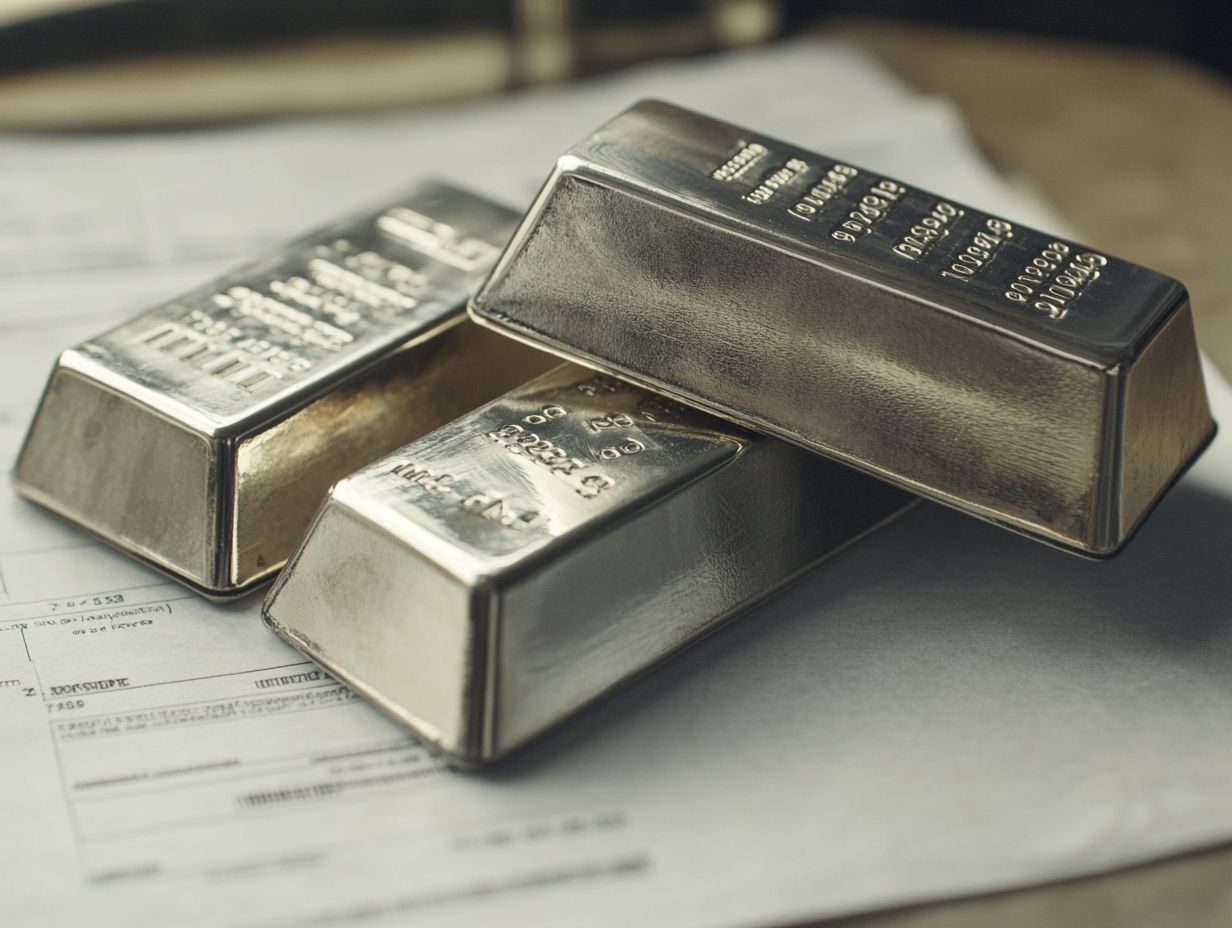
Capital gains tax is the tax you face on the profit made from selling a non-inventory asset, such as precious metals like platinum and palladium. Understanding this tax is essential for grasping its implications on your taxable income.
This tax kicks in when you sell an asset for more than what you originally paid for it. It treats short-term and long-term investments quite differently. As a precious metals investor, it’s crucial to familiarize yourself with Internal Revenue Service (IRS) guidelines. These rules dictate how you report and pay taxes on your gains.
Short-term capital gains those from assets held for one year or less are taxed at your ordinary income rates. In contrast, long-term gains enjoy lower rates. This makes it vital to keep an eye on your holding periods. Understanding these IRS regulations enhances your tax planning and helps you maximize your potential returns from your precious metals investments.
Tax Implications for Platinum and Palladium Investments
The tax implications for your investments in platinum and palladium involve specific IRS regulations that can significantly impact your overall investment returns.
Unlike traditional assets such as stocks and bonds, precious metals come with unique reporting requirements that you must navigate carefully. Gains from the sale of platinum and palladium may be subject to different tax rates compared to other types of investments.
Don’t miss out on potential deductions related to storage costs or any other expenses that may arise. Understanding the intricate nature of these regulations is crucial for maximizing your investment benefits and minimizing unforeseen tax liabilities. This knowledge ensures a comprehensive approach to your overall investment strategy.
Ways to Minimize Tax Impact on Investments
You can effectively minimize the tax impact on your investments by employing a range of tax strategies that align with IRS regulations and foster tax-deferred growth.
Strategies for Reducing Taxes on Profits
Implementing effective tax strategies can substantially reduce the taxes you owe on profits from your investments in precious metals. This approach enhances your overall financial planning.
By utilizing methods like offsetting gains with losses commonly known as “using your investment losses to reduce your taxable income” you can lower your overall taxable income. Investing through tax-advantaged accounts such as IRAs or 401(k)s offers additional advantages. These platforms often provide opportunities for deferred taxation or even tax-free growth.
These strategies maximize your returns and promote a more disciplined and informed approach to investing. Concentrating on these avenues helps you achieve a favorable tax outcome while fully capitalizing on the investment potential that precious metals have to offer.
Tax-Advantaged Accounts for Precious Metal Investments
Utilizing tax-advantaged accounts such as traditional IRAs, Roth IRAs, and precious metals IRAs can provide substantial benefits when investing in platinum and palladium.
These accounts allow you to contribute a specified amount each year, promoting a systematic investment approach. This enhances your exposure to precious metals while ensuring compliance with the IRS s guidelines. Withdrawal rules differ, offering you the flexibility to develop strategies tailored to your financial goals.
For example, traditional IRAs require minimum distributions once you reach a certain age, whereas Roth IRAs offer tax-free withdrawals. This can be incredibly appealing for those focused on long-term growth. These accounts help you diversify your investments across various assets and ensure that your growth remains tax-deferred, thus maximizing potential returns for you as a savvy investor.
Start planning your tax strategies today to maximize your precious metals investments!
Potential Changes to Tax Laws and Their Impact
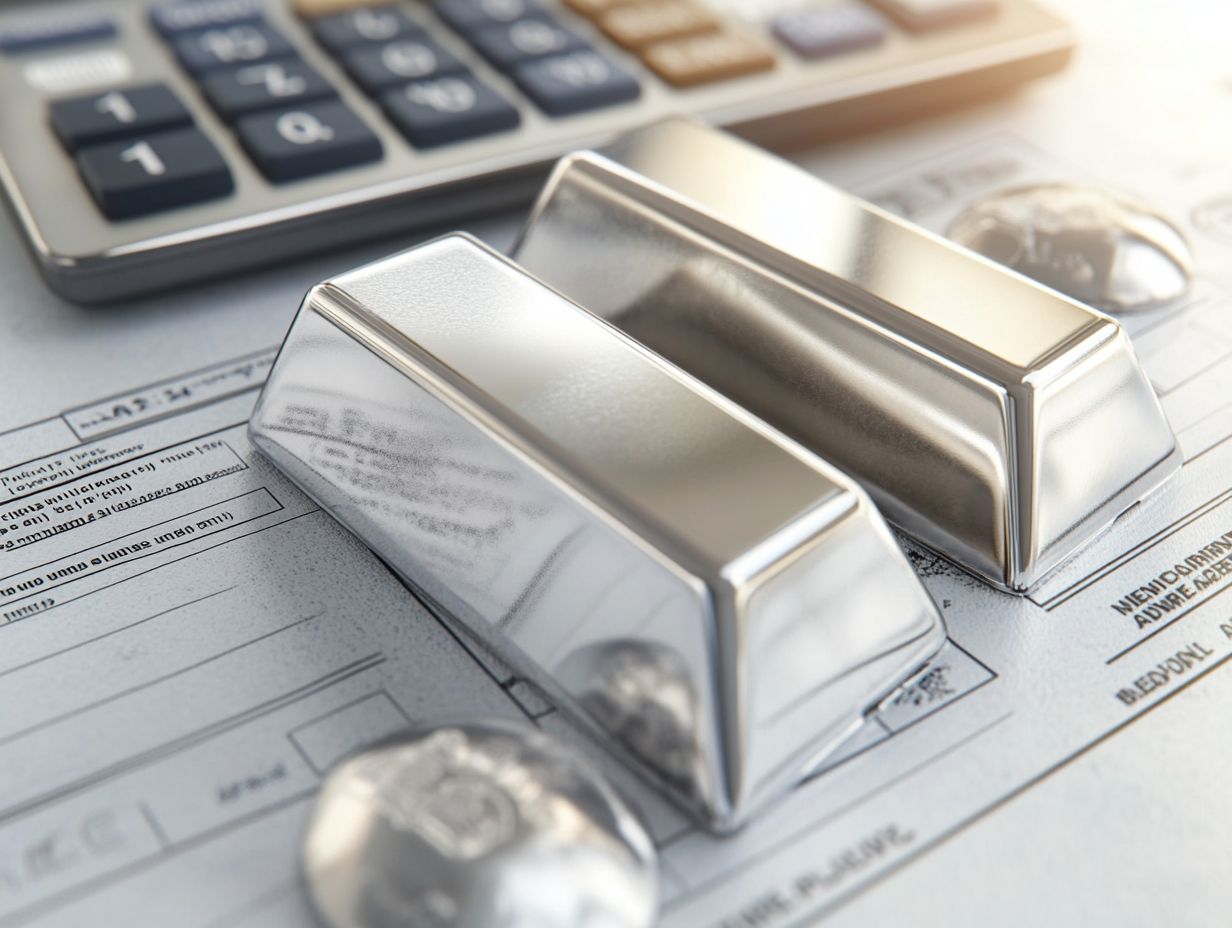
Potential changes to tax laws can significantly influence your investment strategies, especially regarding precious metals. These assets are under the scrutiny of IRS regulations, which are continually evolving.
It’s crucial to stay informed about these shifts to make the most smart investment choices.
Current and Proposed Legislation
Current and proposed legislation regarding taxation holds significant sway over the tax effects for you as an investor, especially concerning precious metals as outlined by the IRS.
The recent introduction of bills aimed at clarifying tax classifications for platinum and palladium could alter not just how profits are taxed, but also how these investments are treated during estate transfers.
Keep your eyes peeled on legislative discussions this could mean big changes for your investments!
If this legislation passes, you could enjoy more favorable tax treatments, particularly if you are a long-term holder. This would ultimately influence your investment strategies in the precious metals market.
How Changes Could Affect Investments
Changes in tax laws can significantly influence your investment conditions and strategies, shaping how you manage your portfolio and respond to market dynamics.
For example, if capital gains taxes rise (the taxes on the profit you make when you sell an asset for more than you paid for it), you might find yourself reassessing your asset allocation.
This could lead you to seek out tax-efficient solutions or consider holding onto assets longer to minimize tax exposure. Conversely, favorable tax reforms may present opportunities for enhanced returns, potentially shifting your risk appetite.
In this ever-evolving landscape, staying adaptable is crucial. You need to evaluate your strategies and be ready to pivot in response to new legislation. This proactive approach not only protects your investments but may also reveal avenues for maximizing returns.
Frequently Asked Questions
How do tax laws affect platinum and palladium investments?
Tax laws can significantly impact the value and profitability of platinum and palladium investments. Changes in tax rates, deductions, and other incentives can directly affect the overall returns of these investments.
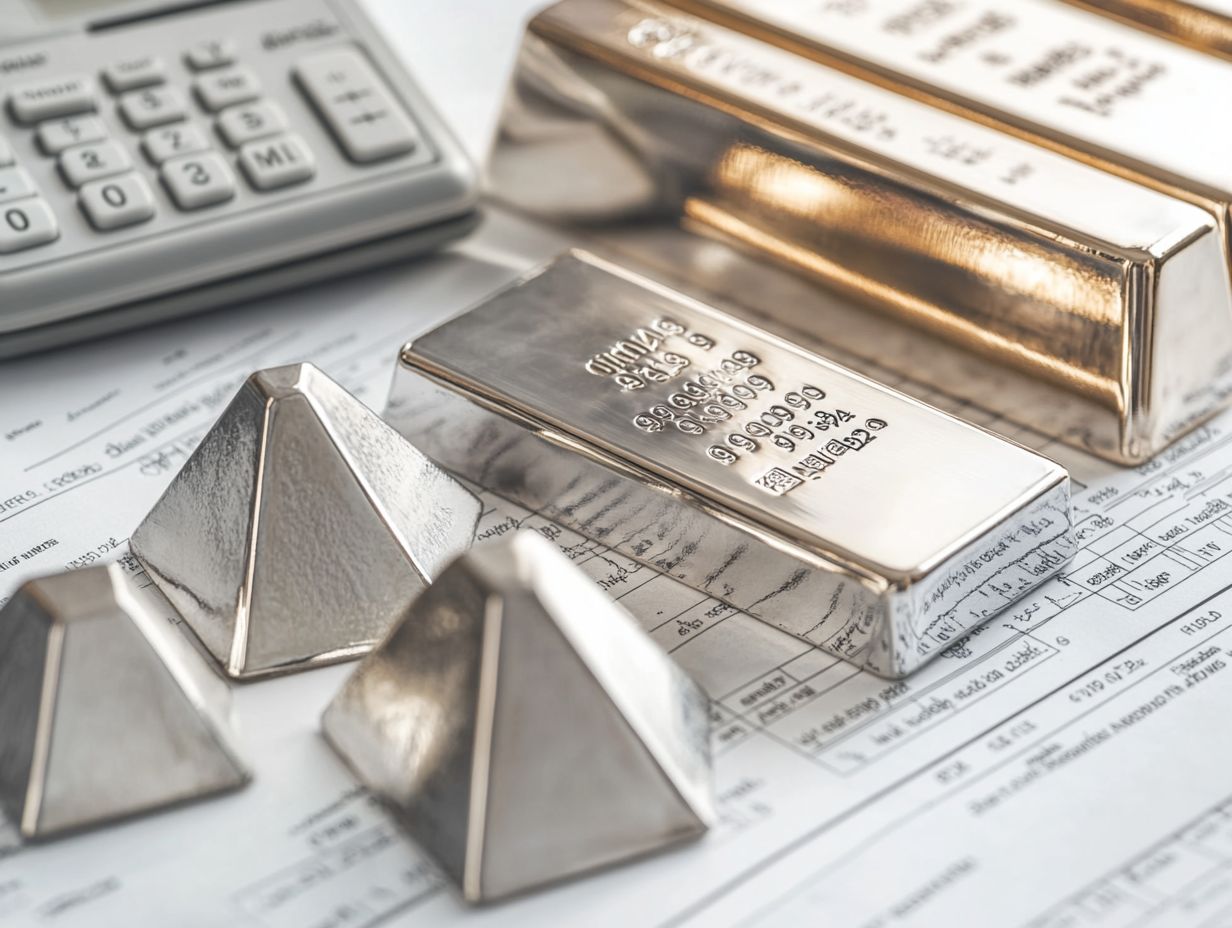
The specific tax laws that apply to platinum and palladium investments may vary depending on your country or state. It’s essential to consult with a tax professional or do thorough research to understand the current laws affecting your investments.
Do platinum and palladium investments have any tax advantages?
Yes, platinum and palladium investments may have tax advantages in certain situations. For example, some countries offer tax breaks for investments in precious metals or lower tax rates for long-term capital gains on these investments.
Can tax laws change and affect my platinum and palladium investments?
Yes, tax laws can change at any time and may have a direct impact on your platinum and palladium investments. It’s important to stay updated on any potential changes and how they may affect your investment strategy.
How can I minimize the tax implications of my platinum and palladium investments?
There are various strategies to help minimize the tax implications of your platinum and palladium investments:
- Hold them in a tax-advantaged account
- Take advantage of tax-loss harvesting
It’s important to discuss these options with a financial advisor or tax professional.
Are there any specific tax reporting requirements for platinum and palladium investments?
Yes, tax reporting requirements can vary. This depends on the type of investment and the tax laws in your country.
You might need to report gains or losses on your tax return. In some cases, a separate form for precious metal investments is required.










